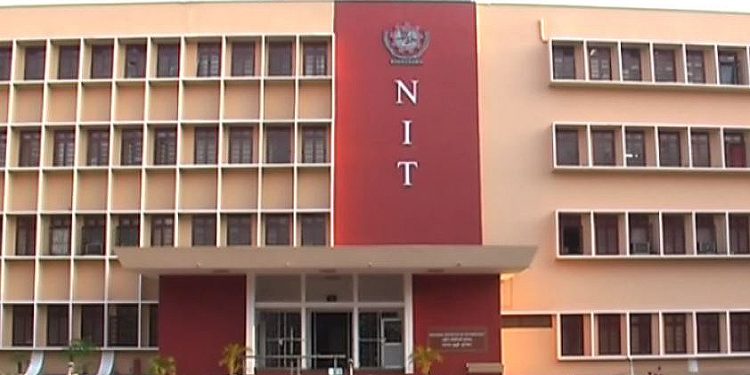Rourkela: Researchers at the National Institute of Technology (NIT), Rourkela, have developed an AI-based Multi-Class Vehicle Detection (MCVD) model and a Light Fusion Bi-Directional Feature Pyramid Network (LFBFPN) tool aimed at improving traffic management in developing countries.
Led by Santos Kumar Das, Associate Professor in the Department of Electronics and Communication Engineering (ECE), the research team has leveraged an Intelligent Vehicle Detection (IVD) system, which uses computer vision to identify vehicles in images and videos.
This system collects real-time traffic data to optimise traffic flow, reduce congestion, and aid in future road planning.
The findings of this research have been published in the prestigious journal IEEE Transactions on Intelligent Transportation Systems.
According to Das, while IVD systems perform well in developed countries with organised traffic, they face challenges in developing nations with mixed traffic. In countries like India, a wide variety of vehicles — from cars and trucks to cycles, rickshaws, animal carts, and pedestrians — often operate in close proximity, making accurate vehicle detection difficult.
“Traditional IVD methods, including sensor systems such as radar and Light Detection and Ranging (LiDAR), are effective in controlled environments but struggle in adverse weather conditions such as dust or rain. Moreover, these systems are expensive to install. Video-based systems hold greater promise, especially for India, but traditional video processing techniques struggle with fast-moving traffic and demand significant computational power,” he said.
“Deep learning (DL) models, a type of Artificial Intelligence (AI) that learns from existing data, provide an efficient way to detect vehicles in video feeds. These models use Convolutional Neural Networks (CNNs) to identify and analyse traffic images. However, they often fail to accurately detect vehicles of varying sizes and angles, particularly in busy, mixed-traffic environments. Additionally, there is a lack of labelled datasets designed for such complex conditions,” he added.
The research team developed the new MCVD model, which uses a Video Deinterlacing Network (VDnet) to efficiently extract key features from traffic images, even when vehicles vary in size and shape. They also introduced a specialised tool called the Light Fusion Bi-Directional Feature Pyramid Network (LFBFPN) to further refine the extracted details.
“What makes LFBFPN unique is that it uses a simpler method, reducing the complexity of the model without sacrificing accuracy. The system then processes the details through another tool called the Modified Vehicle Detection Head (MVDH), which helps it accurately detect and classify vehicles in all kinds of traffic situations,” Das said.
The MCVD model demonstrates an accuracy improvement compared to existing methods. The team tested the model using the Heterogeneous Traffic Labelled Dataset (HTLD), which includes data from several cities across India and is available for public use. The model’s real-time performance was also evaluated on the Nvidia Jetson TX2, an edge computing device, where it maintained strong speed and accuracy even under challenging weather conditions and with low-resolution images.
“By overcoming the limitations of older models and addressing the unique challenges of mixed traffic, the MCVD model offers a scalable option for real-time vehicle detection in developing countries. Its use could help improve traffic systems, reduce congestion, and enhance road safety,” he added.
The research team is further working on developing a traffic control system based on this idea and is also planning to commercialise it through a start-up.
PTI







































